Numbers can frequently be found on silver beer steins made in the various European countries.
While a few general rules exist, it is not always immediately clear exactly what percentage of silver is present in a silver beer stein. We can find silver beer steins with numerical markings such as 12, 14, 84, 88, .800, .900, .925, .925S, and . 830H. Some countries used very simple decimal systems while others used fractional systems with only part of the number stamped on the stein.
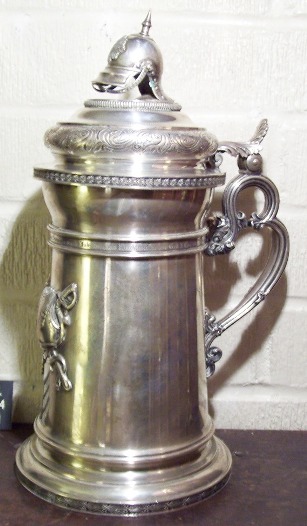 An 1846 German military presentation marked 13 LOTH.
An 1846 German military presentation marked 13 LOTH.The Imperial Crown does not indicate that the maker had something to do with the Imperial Court, as I have been told by many an antique dealer!
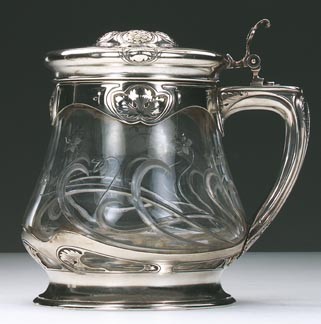 American – Gorham Silver Co. mounts.
American – Gorham Silver Co. mounts.
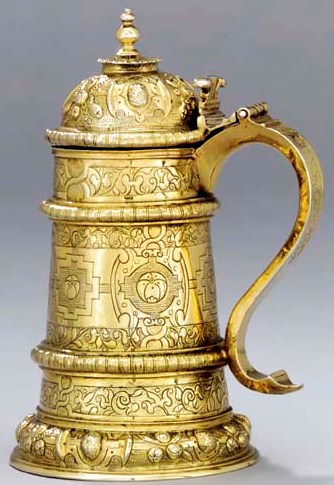
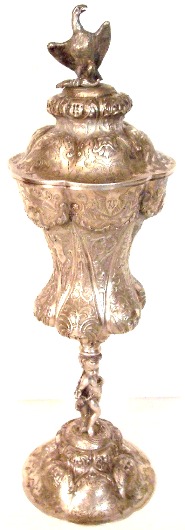
An Austrian “columbine Cup”. [FWTD] These were “Master’s Cups” made to prove how good the journeyman was when he wished to become a Master in the local Silver-smith’s guild.
Austria-Hungary, having an historically German culture, used the Lothige system. The marks that can be found on silver from these areas are 15, 14, 13 and 12, which equate to .9375, .875, .8125, and .750.
Switzerland used the Lothige system until 1880 when they set standards of fineness at .935, .925, .900, .875 and .800. All silver items made in Switzerland after 1882 also have a bear or a grouse as part of the mark.
France used a simple numbering system of .950 or .800. However, these numbers were represented by stamped marks that are variations of human heads. This is a somewhat confusing system as it usually requires reference to a book on silver marks. Since few silver steins were made in France, it will rarely be a problem for stein collectors.
Starting in 1872, Italy used a similar marking system with female heads indicating .950, .900 and .800 fineness. More modern items produced in Italy used a flag with a number 1 (for .925) and a flag with a number 2 (for .800).
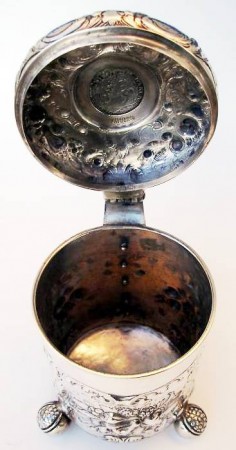
An early Danish silver “peg tankard.” The “pegs” going down the back, were used for measuring when the tankard was in a communal drinking game.
From the early 1900’s Denmark’s silver standard was based on 1000 parts. There marks are followed by an S, such as 925S and 830S. The 830S mark is the most often seen mark on silver from Denmark. Finland added an H to the numerical mark, such as .925H, .830H and .813H. Belgium had a similar system with an A following the numbers, but they changed to a simple .900 or .800.
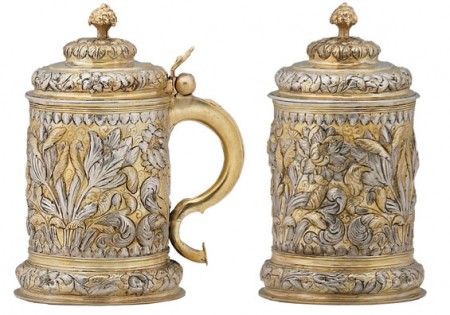
Silver-gilt tankard, Dutch, early to mid 1600’s.
The silver makers in the Netherlands used the old city marks in the 17th and 18th centuries, which guaranteed .875 fineness. Starting in 1814 they changed to a mark of a standing lion with a 1 (equivalent to .934) or standing lion with a 2 (equivalent to .833.)
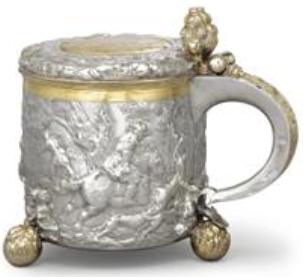
A Circa 1700, Swedish ball footed tankard. 8.75 inches tall. Gilded rim and center of lid medallion.
The marking system in Sweden was based on “The Lod” which was similar to “The Loth” system with 16 being equivalent to 1000. The marking system in Sweden later changed to the 1000 parts system.
Norway used a marking system similar to Sweden for older silver items. In 1891 Norway started using the 1000 part system with an S either before or after the number, such as S830 or 830S. In Norway .830 is the lowest allowed purity.
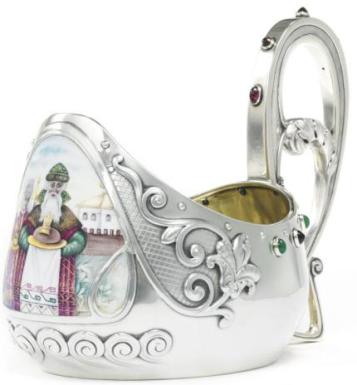
A Russian Imperial age “Kovsh.” (Drinking bowl.)
Silver made in Russia was marked with numbers such as 84. The base or 100% pure number was 96, which was called a “Zolotnik.” An item marked 84 would be 84/96 or .875 pure silver. Other numerical marks that can be found on Russian silver include 88 (.9166 pure) and 91 (.9479). Russian silver was usually profusely marked.
It is normal to find numerous marks on each part of an OLD Russian (and the old Baltic States) silver beer steins, including the body, the lid and the handle.
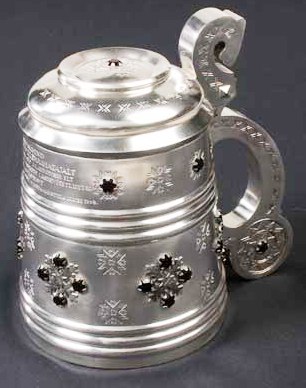
Estonian silver tankard with semi-precious jewels, Estonian usually have a larger than normal bottom finial on their handles .
The Baltic states in the older days were parts of Russia and used the old Russian numbering system They did not have the requirement to make every separate section of silver that the Russian silver-smith had to comply with.
With the help of reference books that specifically identify silver marks, you should in most cases be able to determine the home city of the maker, the maker’s name and the date or at least approximate date that the item was made. There are numerous reference books on silver marks, such as the best beginner’s book: “International Hallmarks on Silver, collected by Tardy (1989, Paris).”
__________
*Reprinted from The Beer Stein Journal, November 1994, by permission from Gary Kirsner Auctions.
[END – SOK – RD – 10 – D D ]


Leave a Reply